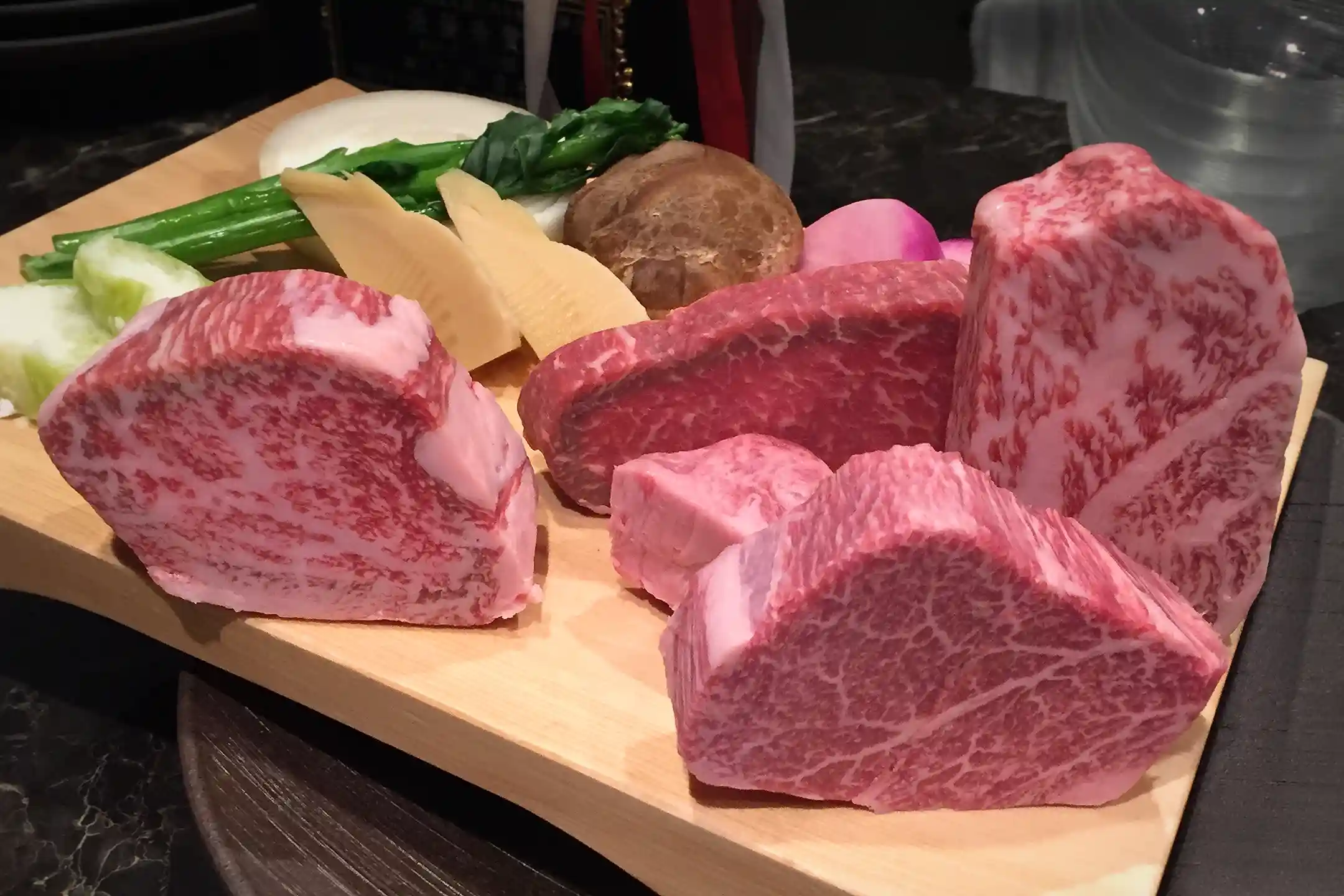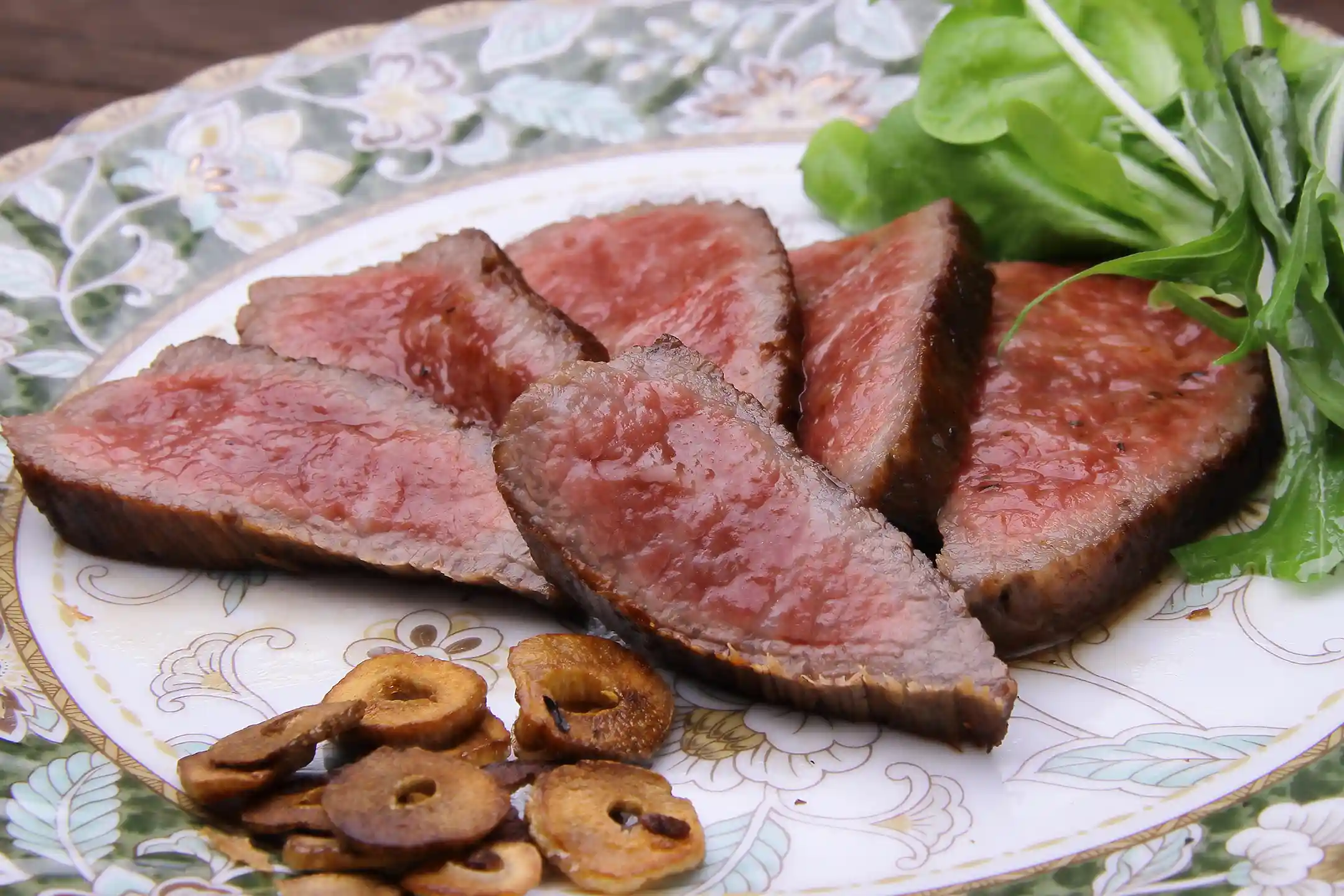Kobe Beef effortlessly captivates even the most seasoned palates—including yours. This legendary delicacy begins with pure-blood Tajima-gyu Wagyu raised exclusively in Hyōgo Prefecture, and only meat that clears a famously exacting checklist earns the right to be called “Kobe Beef.” The lace-like marbling and refined sweetness you taste today are the result of Kobe’s cosmopolitan port heritage and Japan’s centuries-deep craft of cattle care.
In the pages ahead, you’ll uncover the legal definitions and grading standards behind the brand, the nuanced ways it outshines other Wagyu, and the cultural undercurrents that shape each melt-in-your-mouth slice. We’ll also spotlight the sustainability initiatives that keep Kobe Beef relevant for modern travelers. When you finally savor it in Japan, understanding these layers turns dinner into an intimate dialogue with the country itself. Come in, take a seat at the grill, and let one bite speak to both body and soul.
What Is Kobe Beef? — Definition and Key Characteristics
Official Definition and the Standards of the Kobe Meat Marketing & Distribution Promotion Association
Kobe Beef sits atop Japan’s beef hierarchy, yet you can’t simply label any well-marbled steak with the famous name. The animal must be a pure-blood Tajima-gyu Wagyu born and raised in Hyōgo Prefecture—outside genetics are prohibited. Only heifers that have never calved or carefully castrated steers qualify, and each carcass must achieve Yield Grade A or B, a Beef Marbling Standard (BMS) of 6 or above, and an overall Meat Quality Grade of at least 4. Think of these numbers as a luxury passport: without every stamp, entry is denied.
The Kobe Meat Marketing & Distribution Promotion Association oversees the entire journey, from barn to butcher. When you see the official chrysanthemum-shaped brandmark and matching certificate, you can relax, knowing imitation is nearly impossible. This rigorous safeguard embodies a core Japanese belief: excellence is never accidental—it’s preserved through relentless care.
Kobe Beef vs. Other Wagyu — What Sets It Apart
What propels Kobe Beef into a league of its own is a near-obsessive focus on bloodline purity and daily care. Within the broader Wagyu family, only a pure-blood Tajima-gyu can graduate to “Kobe”—a distinction you’ll note the instant those snow-white flecks of fat dissolve on your tongue. If you’re accustomed to classic Western cuts, the silkiness and subtle sweetness may overturn everything you thought you knew about steak.
Behind that moment of revelation lie generations of farmers who minimize herd stress and fine-tune feed as lovingly as vintners shape a vineyard. Experiencing their results doesn’t merely fill you up; it invites you to rethink how different cultures coax the best from a single ingredient.

History and Cultural Roots of Kobe Beef
Kobe’s Open Port and Its Fusion with Western Culture
The story of Kobe Beef is inseparable from the city’s port, which welcomed global trade in 1868. As you stroll past red-brick warehouses and Western-style residences, picture foreign merchants discovering local Wagyu at dinner—a rarity in Japan at the time. Their praise spread faster than any steamship, and news of Hyōgo’s extraordinary beef soon echoed across oceans. Instead of fading as a curiosity, Kobe Beef matured into haute cuisine, proving that respectful exchange can elevate a regional specialty onto the world stage.

Traditional Husbandry and Generational Craft
Every mouthful of Kobe Beef is rooted in decades of refined husbandry. Farmers balance rice straw with custom grain blends, adjust barn temperatures to suit each animal’s comfort, and even deploy AI sensors to spot health changes before the human eye can. Yet the final verdict still rests on a producer’s seasoned intuition—a craft quietly passed from parent to child. These deliberate methods may feel worlds apart from scale-driven systems elsewhere, yet East-West cross-pollination continues to push the industry forward; Kobe Beef thrives precisely because it marries time-honored know-how with smart innovation.
The Kobe Beef Culinary Experience — In Step with a Sophisticated Lifestyle
Legendary Restaurants and Serene Dining Spaces
Whether you crave the theater of a teppanyaki counter or the quiet minimalism of a gallery-like bistro, Kobe offers a spectrum of stages on which the beef can shine. In long-standing steakhouses, English menus and chefs’ live spatula choreography put you at ease; in avant-garde dining rooms, each course arrives as if curated for an exhibition. Japan’s belief that a meal should engage every sense flourishes here—and when a sommelier pairs your steak with crisp Nada sake or a bold Yamanashi red, East and West harmonize in your glass.

Premium Stays in Hotels and Ryokan
Let the indulgence linger by checking into a harbor-view grand hotel or a pocket-size designer hideaway. From your upper-floor suite you’ll watch ships glide past Mount Rokkō—proof that city lights and forested slopes coexist. Prefer tradition? Slip off your shoes at a ryokan, sink into tatami, and notice how cedar, washi paper, and local ceramics turn the room itself into a soothing ritual. While Western properties often champion square footage, Kobe’s best stays focus on restoring equilibrium.

Blending Art, Culture, and Kobe Beef
Kobe’s cultural calendar offers countless ways to fold a prime steak into a day of gallery-hopping or festival revelry. One morning you might trace avant-garde architecture, then break for a lunch menu pairing different Kobe Beef cuts with seasonal produce. Hands-on tastings teach you to distinguish sirloin from rump by aroma alone, while an evening stroll through the Ijinkan district lets Victorian façades frame your next reservation.
Sustainable Kobe Beef — Technology and Environmental Stewardship
Sustainability in the Production Process
Visit a Tajima-gyu farm and you’ll see rain-water catchments, locally grown feed, and a streamlined supply chain designed to shrink the herd’s footprint without compromising flavor. The Kobe certification’s strict paper trail lets you trace an individual steak back to a specific barn and birth date. While some may label such small-scale methods inefficient, you’ll likely sense the conscientious spirit behind them—and perhaps carry home fresh ideas for responsible dining.
Eco-Friendly Ways to Explore Kobe
When it’s time to explore, hop on a seaside tram or rent an electric bike—the city’s compact layout keeps carbon light and scenery abundant. More hotels now display eco-badges beside their concierge desks, and top restaurants compost kitchen scraps or power dining rooms with renewable energy. Here, sustainability is woven into every stage of the experience, not tacked on as an afterthought.
Kobe Beef for Culture-Seekers: Learning Experiences and Immersive Journeys
Seminars and Workshops with Producers and Chefs
If you love rolling up your sleeves, register for a morning workshop where farmers walk you through feed blends before handing you a brush to groom a steer. Later, a chef may demonstrate knife work so precise it feels like calligraphy, then invite you to flip your own cubes of rib-eye on the teppan. Between sizzles you’ll hear tales of 19th-century expats who tasted Tajima-gyu and launched its fame—proof that culinary history can be as tangible as the aroma rising in front of you.
Knowledge Exploration in Related Facilities and Museums
Should curiosity outpace appetite, carve out time for the Tajima Cattle Museum in northern Hyōgo, where interactive displays (now multilingual) walk you from genealogy charts to feed samples. Back in the city, the compact Kobe Beef Gallery distills the brand’s essentials into bite-size videos—then hands you a tasting plate so theory meets practice before you head back outside.

Practical Tips for Enjoying Kobe Beef
Price Range and Reservation Advice
Luxury needn’t equal eye-watering prices. Target weekday lunches and you can sample certified Kobe Beef for roughly ¥3,000–¥5,000, while celebratory dinners range ¥10,000–¥20,000. Weekend slots vanish quickly, so let your hotel concierge or an English-language booking site secure a seat as soon as your travel dates are fixed.
Best Seasons and Event Highlights
Kobe is delicious year-round, yet spring cherry blossoms and autumn foliage turn every waterfront stroll into a postcard. Prefer festivals? Summer’s Meriken Park meat fair lets you graze on bite-size steak while live bands play. Winter brings Kobe Luminarie’s light tunnels—an enchanting excuse to warm up with a sizzling fillet. If you thrive on elbow room, aim for the quieter weeks between New Year crowds and the June rains.
Buying Kobe Beef and Souvenir Ideas
To recreate the magic at home, stop by a certified butcher for vacuum-packed cuts, then confirm your country’s import rules. Many travelers now place online orders timed to arrive after they land—no ice packs required. If customs complicate raw beef, choose Kobe jerky or shelf-stable curry instead: compact, flavorful, and guaranteed to spark stories at your next dinner party.
Conclusion — A Luxurious Cultural Experience Awaits
Kobe Beef is far more than marbling; it distills generations of pedigree stewardship, uncompromising grading, and a port city’s flair for global exchange. Its silky texture and subtle sweetness whisper of artisan hands and heartfelt hospitality. Today, rigorous traceability, animal welfare, and a city-wide eco ethos add fresh relevance. By acknowledging both differences and shared aspirations between Japanese and Western approaches, you transform a luxurious plate into meaningful cultural dialogue. So whether you savor your first bite at a venerable teppanyaki counter, a cutting-edge gallery dinner, or a countryside farm table, you’re tasting a story shaped by local devotion and international curiosity. Bring that story home through carefully chosen cuts or pantry staples, and each mouthful will echo the journey—satisfying your palate and your sense of discovery alike.
Author Bio

Natsumi Ikeshita
Experienced in B2B SaaS marketing and “omotenashi,” Natsumi directs media operations with a focus on hospitality and cultural storytelling. Her global experience and marketing skills bring fresh value to Bespoke Discovery’s content.




.webp)
.webp)